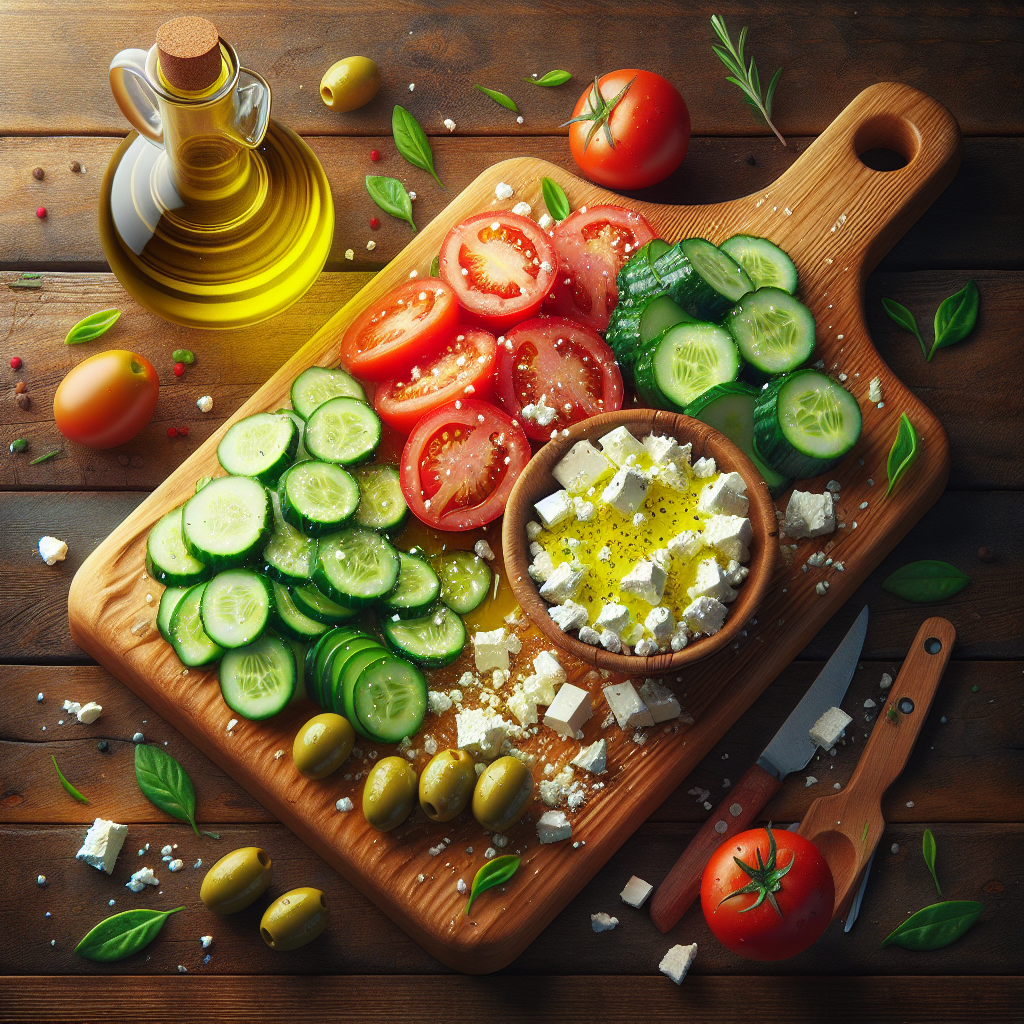Picture a harmonious blend of crisp, soaked bread topped with juicy, fresh tomatoes, tangy feta cheese, and a drizzle of rich olive oil. This is Dakos, a traditional Cretan dish that embodies the simplicity and robust flavors of Greek cuisine. It’s a staple in the Mediterranean diet, known for its health benefits and the use of fresh, local ingredients. Enjoy it under the warm Cretan sun or in your own kitchen for a taste of Greek island life in every bite.


Recipe
Ingredients:
- 4 barley rusks
- 2 large ripe tomatoes, grated
- 1 cup crumbled feta cheese
- Extra virgin olive oil
- 1 small red onion, finely sliced
- Dried oregano
- Salt and pepper
- Kalamata olives, pitted and sliced
- Capers (optional)
- Fresh mint or parsley for garnish (optional)
Instructions:
- Soften rusks under running water if needed.
- Place rusks on a platter.
- Top with tomatoes.
- Season with salt, pepper, and oregano.
- Add crumbled feta.
- Garnish with onion, olives, and capers.
- Drizzle with olive oil.
- Add fresh herbs.
- Serve immediately.
Fun Facts about Dakos
Dakos began as peasant food and evolved into a beloved delicacy. Its alternative name, “koukouvagia,” translates to “owl” in Greek, referencing its rustic origins and the wisdom of using simple, available ingredients. Its exact origin date is unknown, but it has been a part of Cretan diets for centuries, likely dating back to the Venetian occupation of Crete.
This dish is as frugal as it is delicious. Traditionally, it’s made with components that Cretan farmers would have at hand. The barley rusks, known for their long shelf life, were a practical choice for the hardworking peasants. Today, Dakos remains an affordable option for a nutritious meal.
Dakos is especially popular during summer. Its refreshing qualities make it an excellent light meal or starter in the heat. It is also incredibly healthy, with fiber from barley rusks and vitamins from tomatoes. The extra virgin olive oil adds good fats, contributing to the nutritional benefits.
The dish is versatile in terms of settings. It appears on tables at casual home gatherings, local tavernas, and as a mezze in Cretan cuisine. Its ease of preparation—no cooking, just assembling ingredients—makes it ideal for quick, satisfying meals.
As you assemble Dakos, consider the history and culture that shaped this dish. Each bite reflects the Cretan lifestyle, where simplicity is celebrated and the quality of ingredients is paramount. So, give it a try and enjoy a piece of Crete wherever you are.

